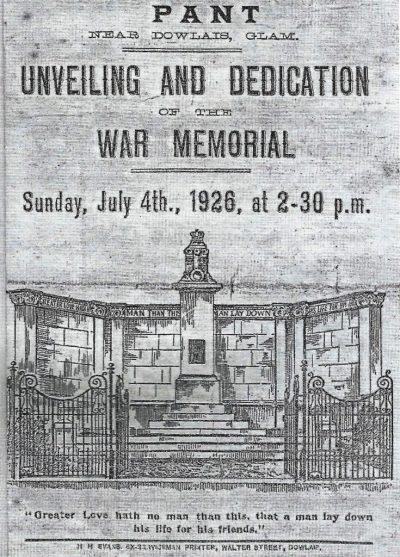We continue our serialisation of the memories of Merthyr in the 1830’s by an un-named correspondent to the Merthyr Express, courtesy of Michael Donovan.

The first thing met would be another turnpike, then a few cottages; one was a public-house, next to which a space or front yard of the Plymouth Arms. On the right hand side for some distance a wall was the only thing between Bridge Street and the River Taff, but the weir not far down diverted its water into the feeder as it was called. The continuation of the river wall kept the road safe for traffic, until further down, after passing the Isle of Wight and the entrance to Caedraw at the end of Swan Street there really was not any protection. However, even that had some advantage, for a leading tradesman, in his evidence as to the sanitation of Merthyr, recommended the use of buckets and their discharge into the watercourse! Brilliant idea!
From the Plymouth Arms dwellings adjoined each other. One was the Duke of York Inn, whose money-box was ransacked in the lodge-room once, and the thief never detected.

A little lower was the Greyhound. The son of the person who had kept this was Mr Edward Lewis Richards, a barrister, who through its becoming known that he was a partner in a brewery there, did not receive the appointment he had hoped for, viz, the stipendiaryship of Merthyr; but got that of Judge of a North Wales County Court, and died at Mold many years ago. A Mrs Todd kept a grocer’s shop a little further on, and then small cottages continued awhile. The rectory was not built.
The end of Albert Street was only an entrance into the field now covered with buildings, and The Hollies was Mr Meyrick, the solicitor’s office. He resided at Gwaelodygarth, which was his own property.
After the death or removal of the Rev Mr Jones a Rev Thomas Williams officiated in the old church, and he resided between Swan and Salmon Streets on the left. It was an old house; it stood by itself, with its gable abutting the road alongside the feeder.
There were three or four bridges over the watercourse. The first was to the house and shop of the Williamses “over the pond” as they were known by. Old Mr Williams had been a veterinary man. His son kept an ironmonger’s shop there. One daughter became a Mrs Davies, another a Mrs David James, and another a Mrs Petherick. Another bridge lower down was to the slaughter-house and the Crawshay’s Arms adjoining; a third, at the end of Three Salmons Street led into Caedraw, and a fourth to the public house adjoining the road.
Just below were the ruins of the old grist mill, which formed an important factor in a lawsuit at one time, but which will be told with other things connected with it by-and-by.
We are now again at the end of Mill Street, with the stocks at its other end, and have completed a peregrination right around the chief part of “the village” as it then existed. Only the short roads have yet to be traversed, the one Quarry Row, and the other the Grawen, or Brecon Road, and after that we will go through Penydarren to Dowlais.
To be continued at a later date…….

















